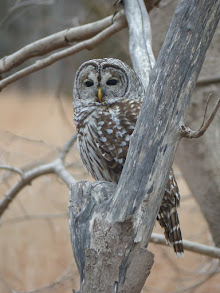
Belle époque Paris boasted its arcades and flâneurs; turn-of-the-century Manhattan had strolls under the El. This postcard, which was mailed in 1910, was issued by the firm of Theodor Eismann, which had branches in Leipzig and New York and published cards with the Theocrom brand. It's a lithograph based on a photographic original, with considerable added color, thus neither strictly a photograph nor an artistic "print." The obviously photographic ironwork in the lower righthand corner hardly seems to belong to the same image as the cartoonish buildings in the background in the upper right, yet the whole composition has a distinct liveliness and beauty.
The Bowery was once New York's theatre district, rowdy and open to all classes in a way that Broadway wouldn't come to be. The poster on the sidewalk appears to advertise the London Theatre, founded by the impresario and politician Henry Clay Miner, but the London itself was several blocks away at at 235 Bowery. I haven't been able to find out what the Saranac at 57 Bowery was, but there's a photographic view of the same sign here at Shorpy (you'll have to click through to the enlarged version there to see the sign in the lower righthand corner).

The card above, published by the Rotograph Co. some time in the first decade of the 20th century, looks down the Bowery from where it ends at Cooper Square. It appears to be a collotype rather than a lithograph, but once again the image has been extensively colored. Browning, King & Co., the large building on the right, was a clothing chain with stores in several cities.
Below, a few thoughts which are not meant to provide any kind of rigorous analysis of these hybrid pictures but rather an attempt to come to terms with why I find them particularly interesting.
An image that is entirely one thing or another -- a photograph or a print or a painting -- is an object that purports to be existentially intact and complete, a fulfillment, to the degree that it succeeds, of a single artist's intentions and abilities. (In saying that it only "purports to be" I am, of course, deliberately deferring to another time the issue of how reading the context of an art work affects our understanding of it.)
An image that has originated in one process but which has then been visibly altered by being subjected -- usually by someone else -- to techniques from another process, an image that continues to preserve visible evidence of having been "worked on," is an image that refuses to be complete, refuses to be "flat." When we examine such an picture we see a disjuncture, a clash between multiple processes and multiple creators, and that conflict re-opens the image -- in fact it refuses to allow the image to re-close. Instead of seeing an "artistic statement," we see an unresolved dialogue. An image that may have originally intended to be documentary, to represent what is as closely as possible, takes on a layer in which what will appear is shaped by an entirely different set of aesthetic or market considerations, but without entirely erasing the trace of the original or revoking its documentary claims. There is no way of deciding how much "weight" to give to the claims of one partner in its creation or another.
In some cases retouching may take over an image and conceal the original entirely. When that happens the underlying structure remains but by no longer being apparent on the surface it loses its destabilizing power. It has become fully contained.
Of course photography is never merely documentary; the way in which an image is framed and developed is necessarily guided by the photographer. But we don't see the photographer, at least at first sight; we only see the image. In a hybrid image, on the other hand, we see visible evidence of the ways in which one set of intentions and processes interferes with another.
















